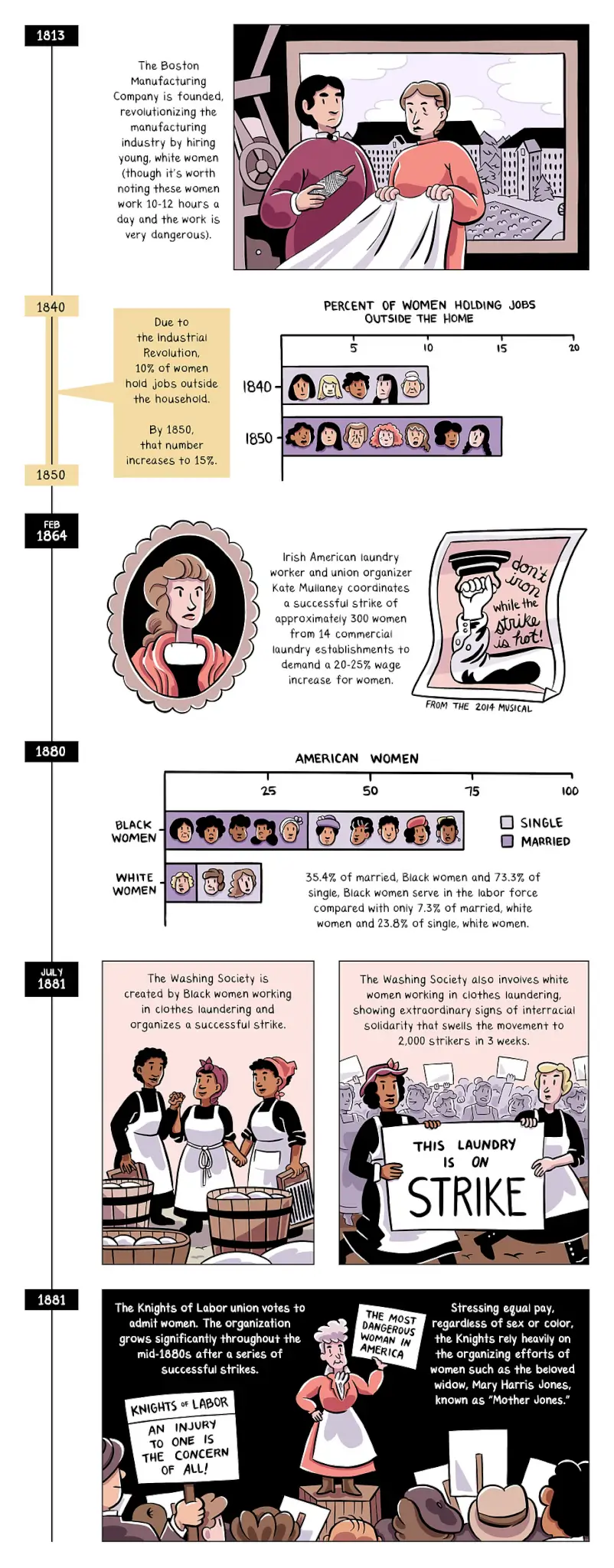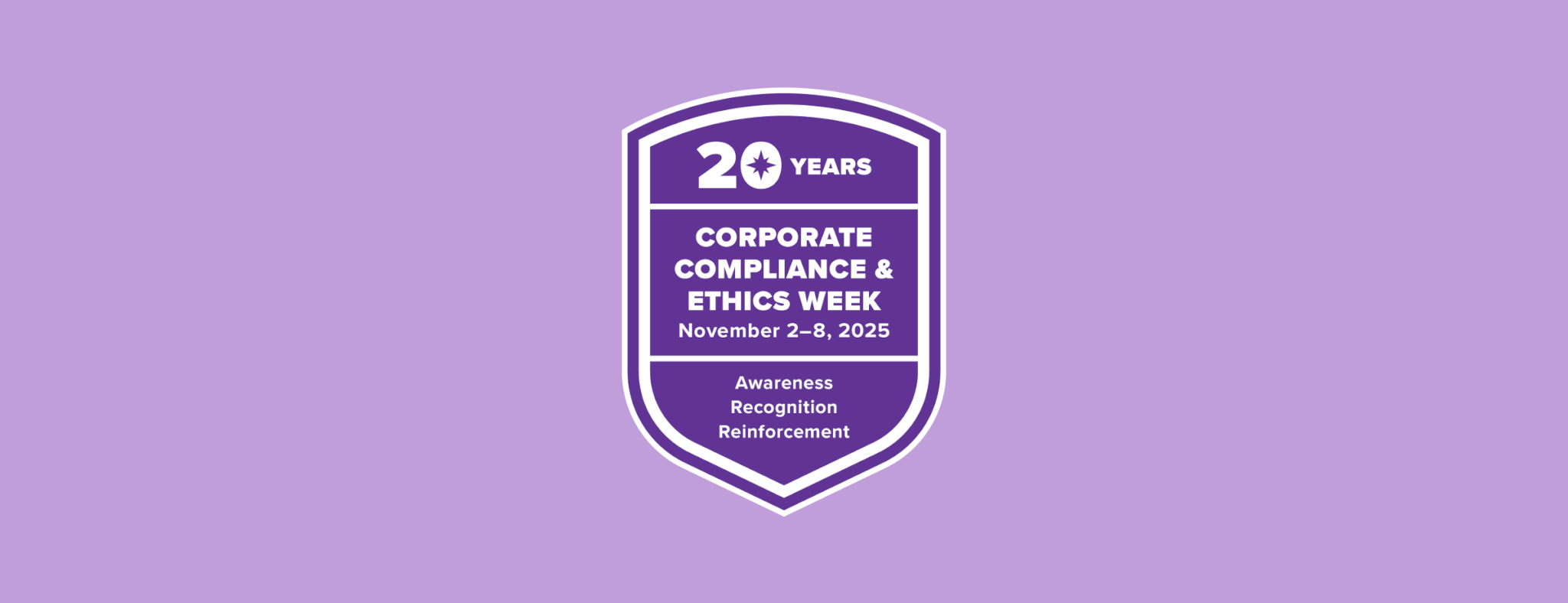An illustrated timeline of our progress towards pay equity so far
In case you haven’t heard, March 15th is Equal Pay Day–a day that specifically marks the average length of time women in the workforce would need to work to meet a year’s pay for their male counterparts (i.e. women on average would need to work 2.5 months longer to reach an equal amount of pay). Right now, the average working woman in the US is paid $0.83 for every $1.00 earned by a man, and this pay disparity has an even greater impact on the retirement savings of women. On this day, we take special care to note the gender pay gap in the United States and how this gap has a direct influence on the lives of women, families and communities of color.
A Note on Data for the Intersectional Experience of Women
We should note here that Equal Pay Day is based an average of all women and excludes a number of factors that we’d like to name before we begin. The date of March 15th is based on an average of data of all women, regardless of demographic. For example, the average AANHPI (Asian American/Native Hawaiian/Pacific Islander) woman is paid $0.75 for every $1.00 given to their white, male counterparts, placing AANHPI Women’s Equal Pay Day on May 3rd of this year. For mothers, that places Moms Equal Pay Day somewhere in July, Black Women’s Equal Pay Day on September 21st, Native Women’s Equal Pay Day on November 30th, and Latina Equal Pay Day on December 8th. When it comes to discussing the gender wage gap, it’s near impossible to ignore intersectional identity.
On the Gender Binary
We’d also like to point out the conversation and data here exists largely in the gender binary. In the research on the gender pay gap, you’re very likely to find a significant (if not complete) exclusion of the experiences of non-binary and gender non-conforming professionals, and the research as it stands today doesn’t cover the complexities involved in the experience of transgender women in the workplace. (For what it’s worth, the Equal Pay Today Campaign has reserved June 15th, 2022 as LGBTQ Equal Pay Awareness Day–not as an acknowledgement of a specific wage gap, but to point out the lack of wage gap data in modern reporting.) We’ll continue to talk about the wage gap for women in the US, and we hope that continuing to bring awareness to fairness in the workplace will evolve as we continue the conversation together.
Isn’t the Gender Pay Gap Discrimination, and Therefore Illegal?
In the hypothetical sense, devoid of all context, yes, it is illegal to pay a woman less than a man in the same role at the same company. But the point of Equal Pay Day is to bring awareness to the larger factors that play a major role in the disparity between men and women. Due to cultural factors here in the US, women are more likely to be segregated into lower-paying jobs and industries, and women are also expected to drop their careers for family and caretaking needs. It should also be noted that companies may also replicate salary discrepancies when they base a salary offer on a woman’s pay history, which is likely to be lower than her peers due to past discrimination (for more of our thoughts on pay transparency, check out our recent blog post on the new NYC transparency law).
A History of Women in the Workforce
In July of last year, Ethena’s Content team chose to highlight the gender pay gap in our Women’s Equal Pay Day nudge. Part of this nudge included an extensive illustrated timeline focusing on the history of women in the United States workforce as a way to get better perspective on how we’ve made it to today’s legal protections for all genders in the workplace (and to help us identify where we still need to go).
About the Illustrator
Joyce Rice is an American cartoonist whose work has appeared in Vox, The Nib, In These Times, and NPR. Her comics frequently center around history, technology, and her dog, Loretta. You can see more at teenyrobots.com!
1800-1899

1900-1949

1950-Present Day

Where to Go From Here
Looking at this long history, it’s clear that progress is not a steady forward trend–there are often major shifts and setbacks. So, as we think about Equal Pay Day today, it’s crucial to think carefully about how we go about eliminating the gender pay gap in a sustainable and lasting way. Here are some of the main takeaways we left our learners with in our training:
Know Your History
History very often repeats itself. Taking a look through this timeline, you’ll note that as recently as WWII, women left the workforce en masse. When you consider the fact that, since February 2020, men have largely regained all the jobs they lost during the COVID pandemic while nearly two million women have yet to return to the workforce, it’s obvious that there are still some serious barriers in the way of working women in the United States. We should pay close attention to our past victories, and, in some cases, use them as strategies to solving today’s problems.
Know Your Rights
Learners taking our Harassment Prevention course know that US employees have protections from discrimination on the basis of gender. In addition, in 2019, Congress passed the Paycheck Fairness Act, strengthening protections against sex-based pay discrimination and providing important updates to the Equal Pay Act of 1963. It allows workers to challenge discrimination and provides employers with incentives, training, and technical assistance to comply with the law.
We’ll send you off with a “Happy Equal Pay Day 2022,” but just in case you’re curious to learn more about the history presented in the timeline above, we’ve placed a list of the sources that help us bring it to life below.
If you're interested in learning more about Ethena's inclusive approach to Harassment Prevention, as well as our other courses, check out our Courses page. If you're interested in seeing how Ethena's training might be a great fit for your team, get in contact with a member of our team!
1800s
- Boston Manufacturing Company
- Kate Mullaney
- The Washing Society
- Participation of married and single women in the workforce
- Knights of Labor
1900-1949
- Madame C.J. Walker
- Triangle Shirtwaist Factory Fire
- Shift in American sentiment that only men were entitled to jobs during The Great Depression
- Frances Perkins
- Women’s Auxiliary Army Corps
- Women are asked to leave the job market to make room for men.
1950-Present
- Equal Pay Act
- Title VII of the Civil Rights Act
- By 1970, 50 percent of single women and 40 percent of married women were participating in the labor force.
- Pregnancy Discrimination Act
- Title VII on sexual harassment as a form of sex discrimination
- Ai-Jen Poo
- Peak participation rate of working-age women in the workforce
- U.S. Supreme Court Rules that Title VII applies to LGBT employees








